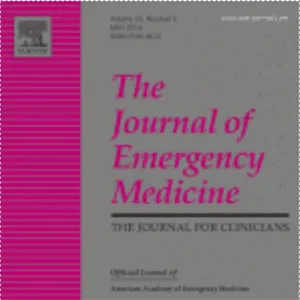This podcast describes a study examining aerobic capacity in a cohort of over 1200 adult survivors of childhood cancer and related impairments of cardiac, pulmonary and neuromuscular body systems, to understand how aerobic capacity influences all-cause mortality.
TRANSCRIPT
This JCO Podcast provides observations and commentary on the JCO article 'Exercise Intolerance, Mortality, and Organ System Impairment in Adult Survivors of Childhood Cancer' by Ness et al. My name is Kristin Campbell, and I am a licenced physical therapist and associate professor in the Faculty of Medicine at the University of British Columbia in Vancouver, Canada. My oncologic specialty is in rehabilitation, primarily related to breast cancer.
Exercise intolerance is a global measure of functional capacity that reflects the complex integration of body systems. It is well established in the general population that exercise intolerance is predictive of future cardiovascular health and mortality. Whether this relationship also existed for adult survivors of childhood cancer was examined by Ness and colleagues in the article that accompanies this podcast. . In the largest study to date of its kind, this manuscript reports on a comprehensive and methodologically rigorous examination of exercise intolerance measured by a gold standard maximal cardiopulmonary exercise test in over 1200 adult survivors of childhood cancer who are part of the St. Jude’s Lifetime Cohort Study.
The first main finding is the low levels of exercise capacity in this sample of childhood cancer survivors despite a relatively young mean age of 35 years. The observed maximal aerobic capacity, or VO2peak, ranged on average between 25-27 ml/kg/min, which fall into the “poor” or “very poor” categories of age and sex matched normative values. Compared to 285 community controls who were friends or family members of the cohort patients, the observed maximal aerobic capacity values for childhood cancer survivors were on average 22% lower. In fact, these values are actually more consistent with values seen in healthy adults in their seventies or eighties. Furthermore, the low value of maximal aerobic capacity may also be an underestimate. Thirteen percent of individuals in the St. Jude’s cohort who agreed to participate in the study were not cleared to undertake the maximal cardiopulmonary exercise test due to recent diagnosis of cardiac or pulmonary disease, or lab values and symptoms indicating cardiac or pulmonary issues. This suggests that the prevalence of exercise intolerance may be even greater in a real-world clinical setting than that observed in this cohort.
To examine the association between exercise intolerance and mortality, the authors defined exercise intolerance as a maximal aerobic capacity of < 85% of predicted VO2peak. Using this approach. 56% of childhood cancer survivors were categorized with exercise intolerance compared to only 26% in controls. In addition to the high prevalence, exercise intolerance in childhood cancer survivors increased hazard of death nearly four-fold compared to those without exercise intolerance. Of the 24 deaths observed, 21 were seen in those categorized as having exercise intolerance compared to only 3 in those categorized without exercise intolerance. This highlights the potential importance of developing and implementing effective interventions that aim to increase physical activity levels and exercise tolerance in childhood cancer survivors with the goal of improving long-term health and survival.
A unique feature of this study is that the authors also undertook comprehensive measures of host, treatment, and lifestyle factors to better understand how these factors influence exercise intolerance. These additional measures included cardiac imaging at rest, autonomic response, measured by blood pressure response to the maximal graded exercise test, standard pulmonary function testing, quadriceps strength testing, and peripheral sensorimotor function using the modified total neuropathy scale. This data provides a rare look into the acute and chronic responses to exercise of the cardiovascular, pulmonary, autonomic and neuromuscular systems in those exposed or not exposed to cardiotoxic agents and will appeal to those an interest in exercise physiology. Odds of exercise intolerance were highest with reporting <150 minutes per week of moderate to vigorous physical activity, lower quadriceps strength, chronotropic incompetence, FEV1 <80% of predicted, non-white race, and poorer diet quality. These findings provide guidance around key factors that could be used to design effective interventions and monitor response to interventions, with a goal to improve exercise tolerance in childhood cancer survivors.
Of note, the type of treatment received impacted the presentation of exercise intolerance. Lower exercise tolerance was observed in individuals who received >350 mg/m2 of anthracyclines, >30 Gy of chest radiation, >20 Gy of cranial radiation and receipt of carboplatin. As a result, the authors suggest that even asymptomatic childhood cancer survivors who have received these treatments be screened by medical providers for any required medical management prior to recommending or implementing an exercise program. Furthermore, while ejection fraction of <53% was not associated with exercise intolerance, global longitudinal strain > 1.5 SD above age- and sex-predicted increased the odds of exercise intolerance with an odds ratio of 1.71 in those exposed to cardiotoxic agents and an odds ratio of 1.29 in those not exposed to cardiotoxic agents. The authors suggest that the use of echocardiology derived strain be expanded from current published guidelines from the American Society of Clinical Oncology on Prevention and Monitoring of Cardiac Dysfunction to identify early cardiac dysfunction in childhood cancer survivors with exercise intolerance and normal ejection fraction.
The study does have some key limitations. It is cross-sectional in design, making it difficult to assign temporal relationships between impairments in body systems and exercise tolerance. For example, is it the treatment that causes impairments in body systems that then limit exercise tolerance, or does situational inactivity due to side-effects of cancer treatment drive exercise intolerance and this in turn negatively impacts the exercise response of body systems? Furthermore, while there was a high participation rate and participants did not differ from non-participants by age, race or sex, not all eligible survivors enrolled. This may over or underestimate the prevalence of exercise intolerance or impact on mortality.
In considering the implications of these findings to clinical oncology, the authors acknowledge that adult survivors of childhood cancer face unique challenges in engaging in physical activity. In light of the high prevalence of exercise intolerance in childhood cancer survivors and the association to all cause mortality, the authors suggest that survivors may require referral to trained exercise specialists to learn how to accommodate specific impairments and deficits in order to reap the benefits of engaging in exercise. In the United States, the appropriate exercise specialists could include physical therapists, occupational specialists, certified exercise physiologists or physical medicine and rehabilitation specialists. Oncology providers are encouraged to include these individuals on their care teams and establish a connection to available programming in their healthcare facility or community to provide adult survivors of childhood cancer with greater access to appropriate exercise programming aimed at improving exercise tolerance.
This concludes this JCO podcast. Thank you for listening.







